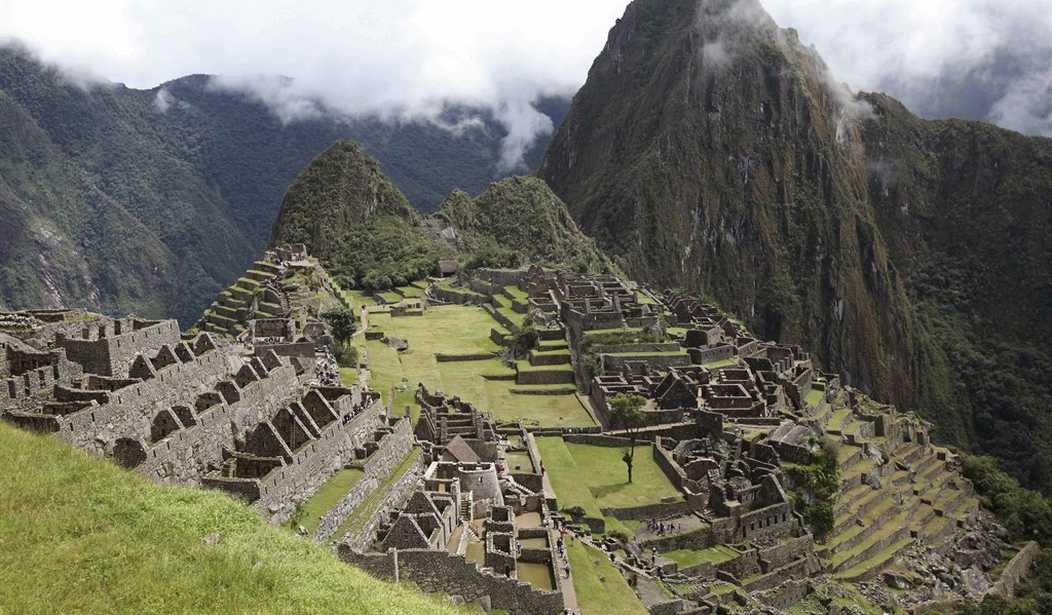Having been lied to all my life by advertisers promising that Coca-Cola™ would “teach the world to sing in perfect harmony” and that Doublemint™ gum would “double your pleasure, double your fun” by inducing incestuous hot twins to want to have a threesome with you on account of chewing gum, I admit that I was skeptical as to whether Machu Picchu, the much-touted Wonder of the World, would deliver the goods.
It did. In fact, it exceeded expectations — a rare thing in a world full of overblown promises.
I find it difficult to encapsulate in the written word what it is that is so captivating — dare I say transcendent — about the mysterious Incan ruins atop a mountain in the “high jungle” of the Peruvian Amazon. Some things, I guess, just have to be experienced through the media of one’s own senses — the five recognized ones by the materialist world and perhaps those of a more mystical or spiritual nature that have yet to be fully understood.
Our tour guide, I believe, was one of the best the site has to offer. I cannot make that claim definitively by way of comparison because he is the only one to have ever offered my wife and me a tour of the place, but nonetheless, I believe it to be true.
He was a bit of what the corporate state media might call a “conspiracy theorist” in that, as he explained to us, he believes Machu Picchu to be far older than the current prevailing archaeological narrative claims it to be, which is 600 years — predicated largely on inaccurate carbon-dating.
Via MachuPicchu.org (emphasis added):
Radiocarbon testing (carbon-14 dating) places the date of Machu Picchu’s construction around 1450 during the reign of the Inca King Pachacutec, the great builder, considered as the great founder of the Inca Empire. Other vestiges dating from this same time period include Korikancha, or the Temple of the Sun, in Cusco which retains a circular tower and the remains of some original walls in modern times that were crafted by the Inca.
Theories help break down the purpose for which Machu Picchu served the Inca Empire. It is believed that Machu Picchu was built to house and support a population of around a thousand people – likely of higher class or religious importance – from the Inca Empire.
Even proponents of using carbon-dating to date objects admit it has flaws, which is not to say that it has no value but rather that it is a single data point amid a spectrum of evidence.
Via phys.org (emphasis added):
Carbon is found in all living things and is the backbone of all molecules. We absorb it when we eat food and exhale it into the atmosphere. Radiocarbon dating compares the three different isotopes (a type of atom) of carbon.
The most abundant, carbon-12, remains stable in the atmosphere. It's a good yardstick to measure the age of skeletons as one of the other isotopes, carbon-14 is radioactive and decays over time.
Since animals and plants stop absorbing carbon-14 when they decay, the radioactivity of the carbon-14 that's left behind reveals their age. But there's a catch. Low amounts of organic material, the diet of the dead person or animal, and contamination with modern samples can skew the calculation.
Variation in dating between labs alone can be up to 1,000 years. It is like dating Queen Elizabeth II to William the Conqueror's time.
Not being an archaeologist myself, and having gotten a C in geology in college, if that is relevant at all, I cannot say with any degree of certainty how old Machu Picchu actually is.
However, trusting my own sense of things, being up there in that place with the ancient-looking stones and the hard-to-describe energy that it exudes, and observing the clearly different slayers of stonework that any layperson can see and listening to the guide (who is a full-blown native with roots going back centuries in the high jungle, by the way, for what it’s worth) I tend to believe it is, actually, much older than 600 years and probably much older than the Inca civilization. Which begs the question: if the Incas didn’t build Machu Picchu, who did?
The problem with accurately dating ruins like Machu Picchu has parallels in all branches of science. The scientific method is entirely based on asking new questions or old questions in different ways to arrive at potential new answers—the truth, no matter where it may lead.
However, scientists, who belong to an institution and are driven by the same self-glorification and self-enrichment as any flawed human, resist these new avenues of exploration because being proven wrong, while a benefit to the general field, would be a detriment to them personally. Orthodoxy pays the bills and gratifies the ego.
The embodiment of this dilemma, as we all know by now, is Anthony Fauci, who declared himself the high priest of The Science™ and equated criticism of him and his various crimes over the course of his career to criticism of The Science™ itself.










